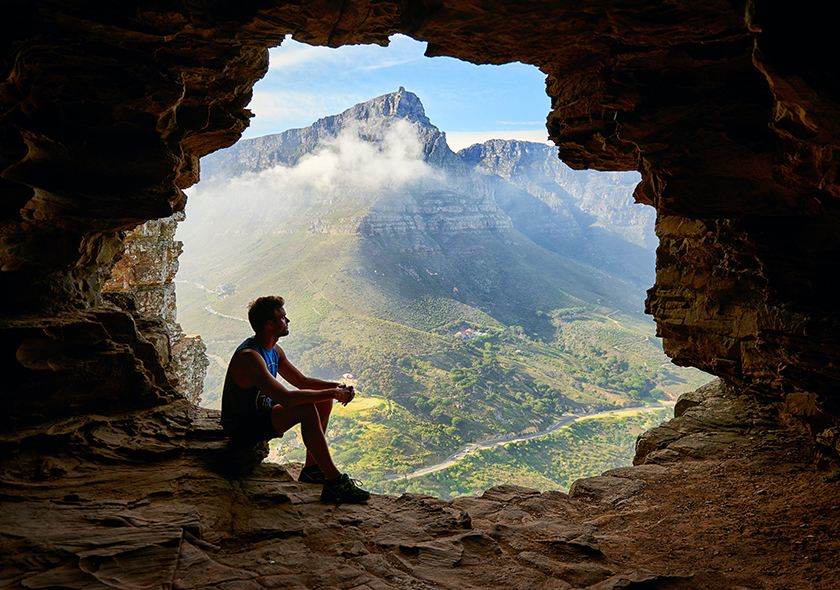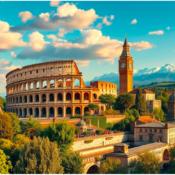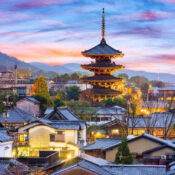12 Best Amazing Cities To Explore In Japan
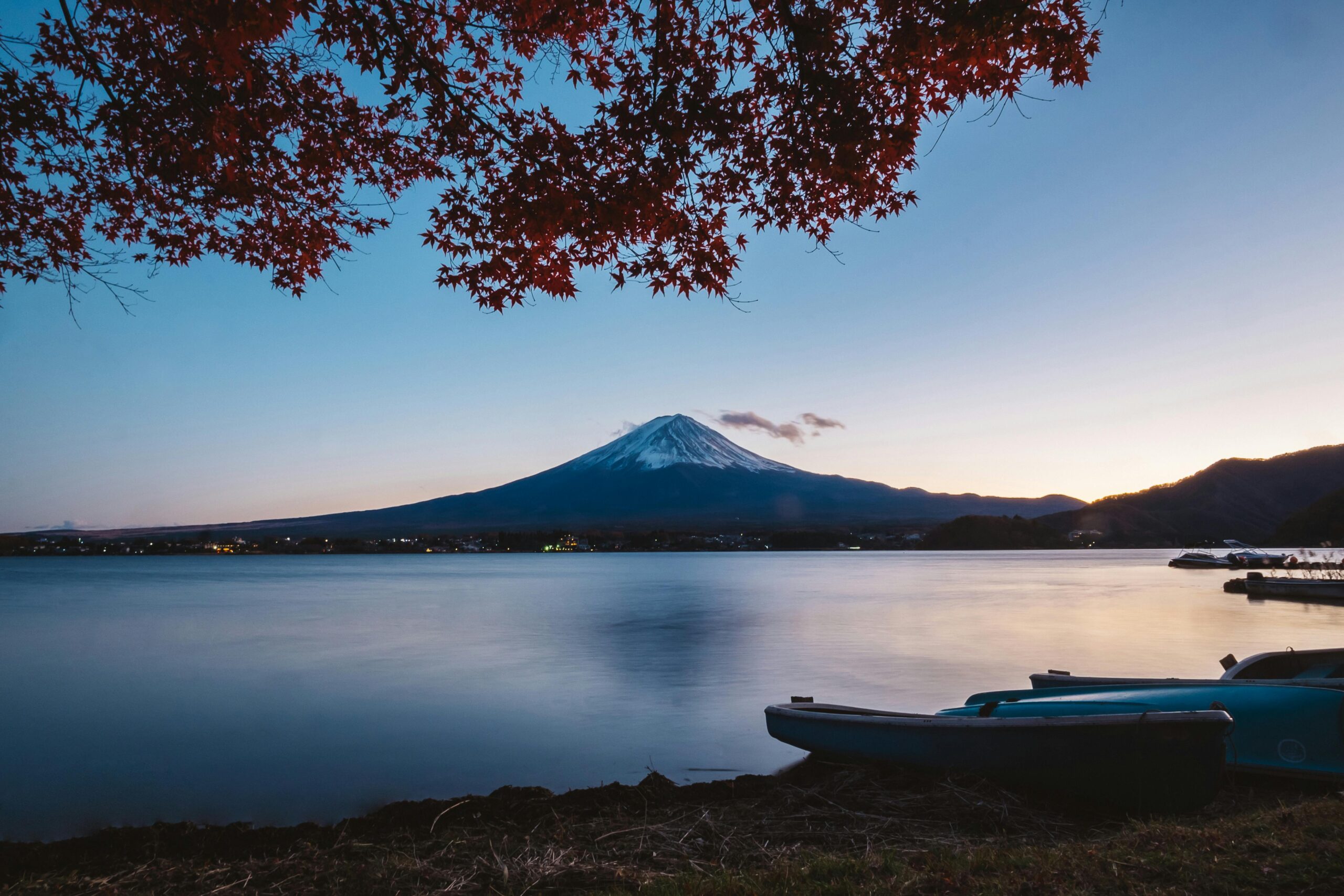
12 Best Amazing Cities To Explore In Japan
Japan is a nation of diverse, where the modern and the ancient exist peacefully. This is evident, when you explore Japan. Even if you spent years exploring Japan’s historical Buddhist and Shinto temples, culinary marvels, and contemporary skyscrapers, there would still be plenty to see.
Here is our list of the best cities in Japan, which includes both well-known tourist destinations like Tokyo and many more.
Places To Visit in Japan:
Let’s explore the best amazing places to visit:
1. Tokyo,Japan:
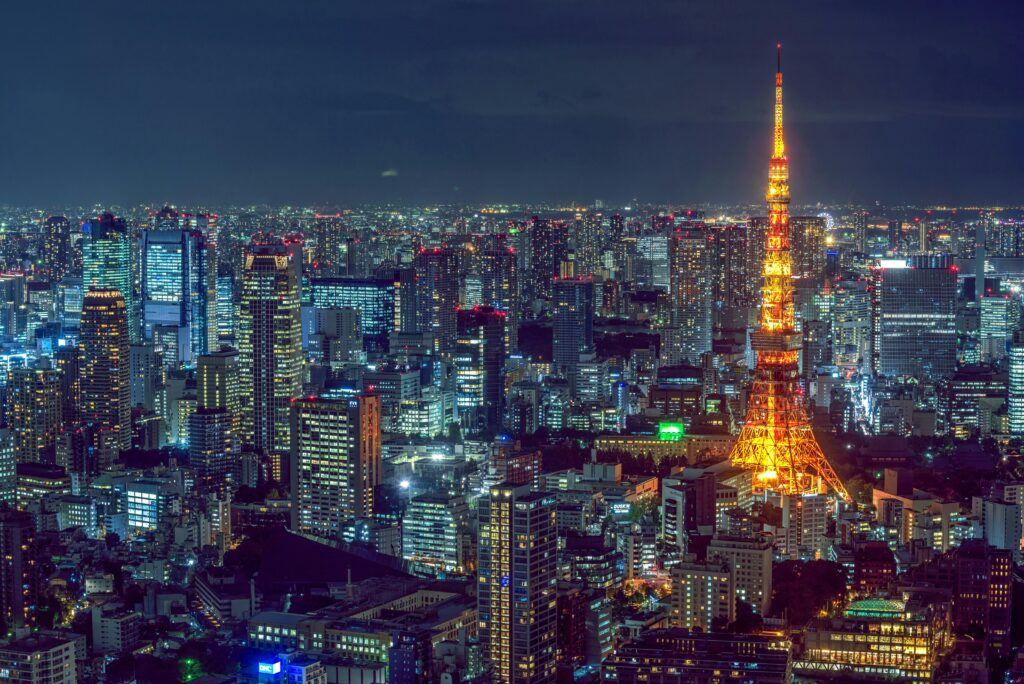
The majority of foreign visitors to Japan arrive first in Tokyo. Even if Tokyo isn’t your final destination, it’s still a city that you should see and appreciate. Tokyo offers an unmatched fusion of the ancient and the modern in Japan’s most diverse and educated city.
Get your tech fix among the steel and glass skyscrapers in Electric Town (Akihabara). Next, visit a historic Shinto or Buddhist shrine, like Tokyo’s oldest temple, Sensoji Shrine. Another contrasted pair worth seeing are the Imperial Palace and the Museum of Modern Art. Which are located close to one another.
When it comes to unusual attractions, Tokyo is the place to go. Visit the Kite Museum, the Studio Ghibli Museum of animation, the gruesome Parasitological Museum, or the Gigo Sega Building arcade. Featuring six levels filled with everything from the earliest arcade games to virtual reality experiences, this is one of the biggest arcades in the world.
Observing cherry blossoms, or sakura, is a centuries-old Japanese custom. People swarm to parks for approximately a week in the spring to witness the trees’ breathtaking soft pink blossoms, with petals that fall and drift like snowflakes. While it can be difficult to plan your visit, sakura in Tokyo is most likely to occur from 24March to 2 April.
2. Kyoto,Japan:
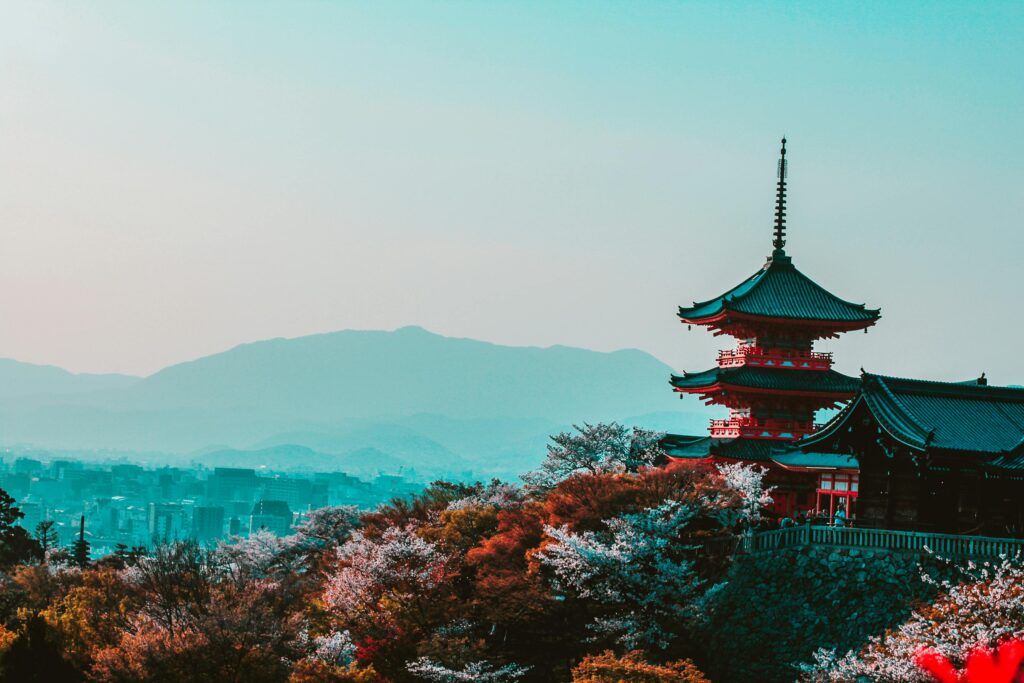
Kyoto, the historic capital of ancient Japan, is well-known for housing numerous UNESCO World Heritage Sites. The famous Kinkaku-ji Temple, often known as the “Golden Pavilion”. Its walls covered in gold leaf, the massive samurai Nijo Castle, and the Byodo-in Temple, which depicted on the 10 yen coin.
Kyoto exudes a serene beauty, replete with exquisite gardens and shrines all around. One of Kyoto’s most beautiful views is the Arashiyama Bamboo Forest, which should not be missed. The Fushimi Inari Shrine’s thousands of orange-red torii gates are also similar.
Visit Gion’s entertainment zone, where geishas stroll the alleyways flanked with traditional wooden houses, for a unique sightseeing experience. You should definitely go here to sample kaiseki ryori, or traditional Japanese haute cuisine, and ochaya, or teahouses.
3. Osaka:
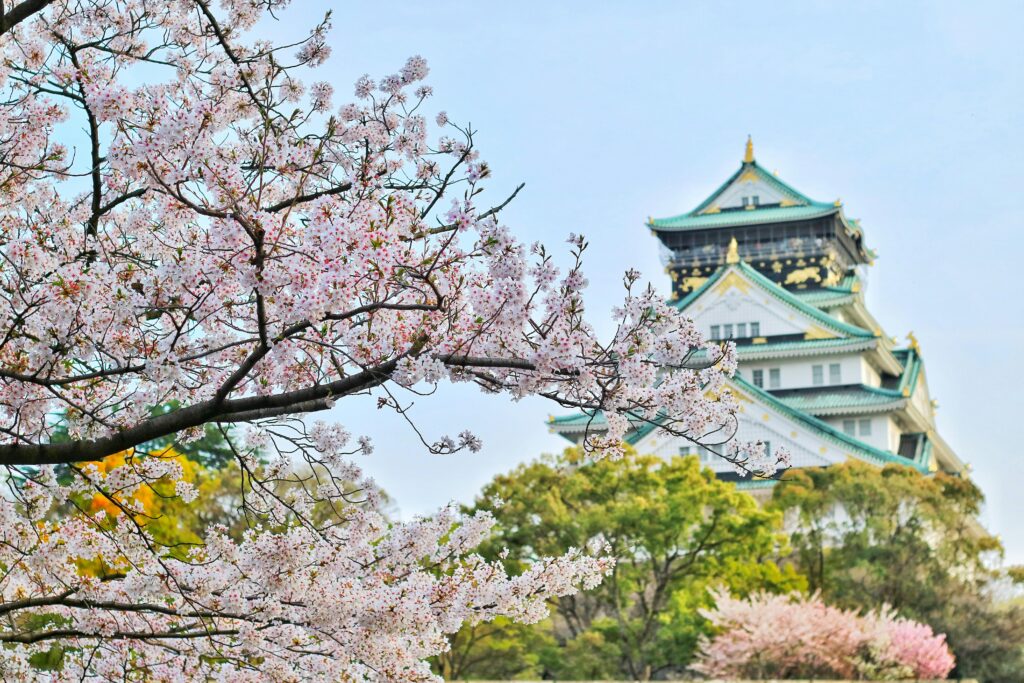
In contrast to other Japanese cities, Osaka has a small-town atmosphere. After being extensively bombed during World War II, it was rebuilt swiftly and somewhat clumsily. As a result, it lacks many of the historical sites seen in other towns.
For your money, you’ll get plenty of authentically rural Japanese charm, some of the best street cuisine in Japan (a specialty is kitsune udon, a noodle soup with fried tofu), and some of the best places to buy stylish vintage clothing and electronics at lower costs than in Tokyo.
The Open Air Museum of Old Japanese Farmhouses and the Bunraku theaters, where you may witness the age-old Japanese puppetry technique, are two must-see locations in Osaka. Another fantastic location to explore is Osaka Castle; alternatively, you may take a Gozabune boat and simply enjoy the view of the 16th-century fortification from the river.
In addition, Osaka has a large number of onsen, or thermal baths, which, despite their spa-like atmosphere, offer a distinctive cultural experience that is well worth visiting.
4. Hiroshima:
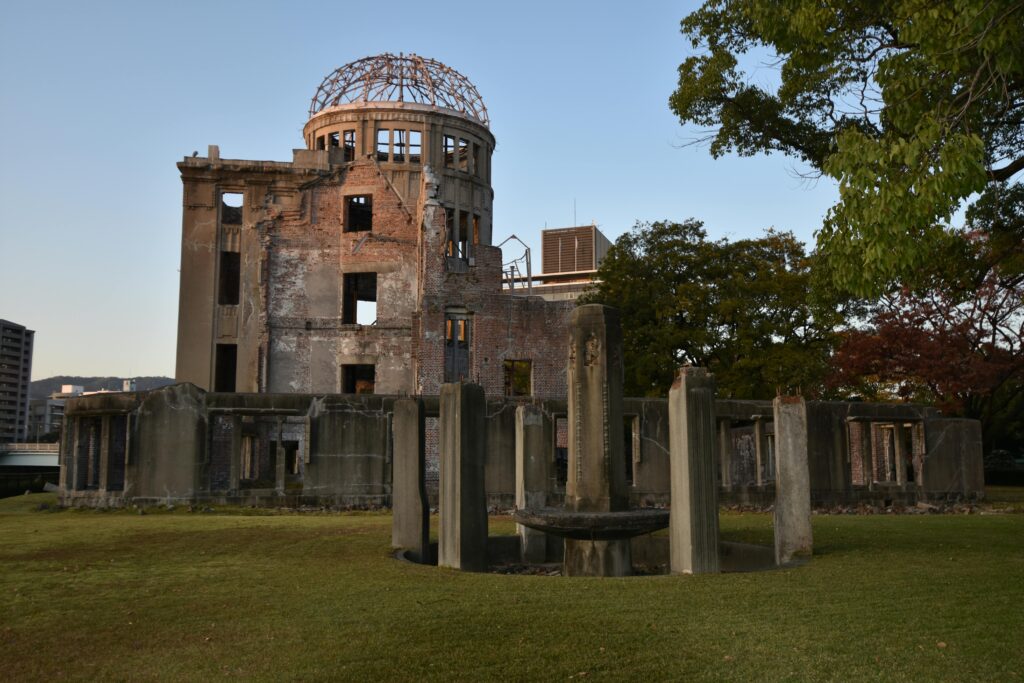
Perhaps the primary draw for tourists to Hiroshima is its history, but it shouldn’t be the only one. It’s essential to visit the Hiroshima Peace Memorial Park if you wish to learn about the city’s tragic past. The Hiroshima Peace Memorial Museum, which chronicles the atomic bombing of Hiroshima during World War II, is located here, along with the skeletal remains of the Atomic Bomb Dome.
Situated in the center of Hiroshima is the medieval Hiroshima Castle, adorned with elaborate woodwork and black lacquer. The castle is well-known for its monthly Samurai performances held just outside the castle gates. It is also home to a shrine and a museum dedicated to the Samurai.
Hiroshima’s Mazda Museum is a must-see site for car enthusiasts. The Hiroshima-style okonomiyaki, a kind of pancake stuffed with cabbage, noodles, bean sprouts, a fried egg, and sweet sauce, is also a must-try for visitors.
Miyajima Island, accessible from Hiroshima by charming ferry journey, makes for an excellent day trip destination. Arriving visitors are drawn to Itsukushima Shrine and the renowned “floating” torii gate. Which appears to float on the turquoise waters during high tide. On the other hand, you can walk up to the gate at low tide.
Also Read: Best places to Visit in Japan
5. Nara,Japan:
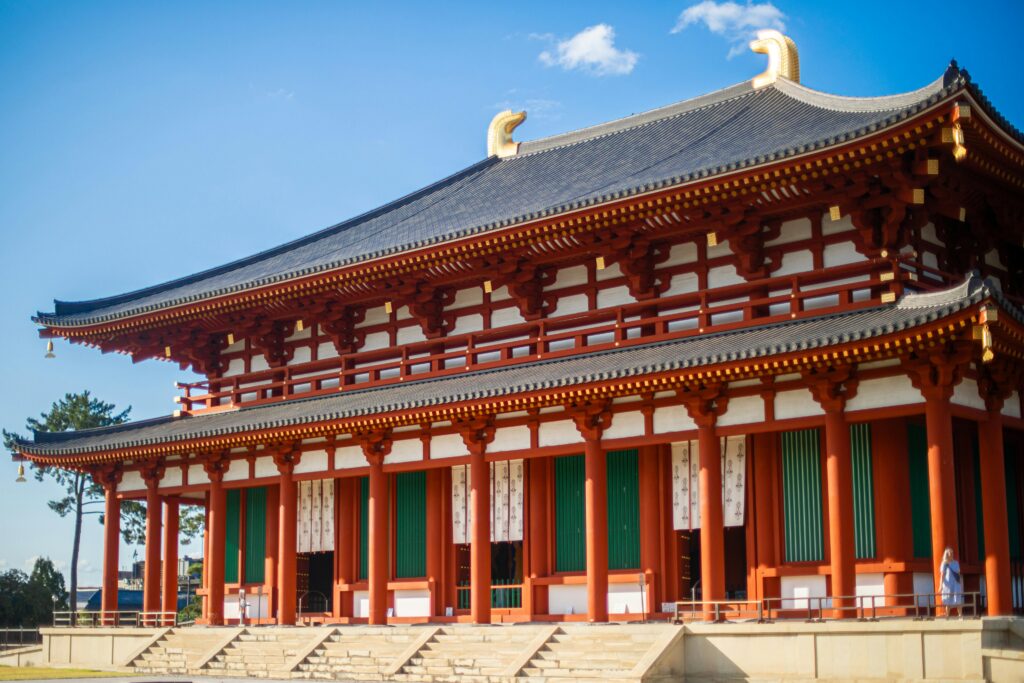
You can easily spend a day excursion to Nara, which is less than an hour’s journey from Kyoto by high-speed rail. But make sure to stay at least one night if you want to really explore this charming little city.
The most well-known aspect is its Nara Park, where more than a thousand kind, inquisitive deer roam freely and frequently get very close to people. The deer are protected as National Treasures and are not allowed to be disturbed or injured by park visitors.
Once you’ve spent some time with these charming animals, visit Tōdai-ji Temple. A UNESCO World Heritage Site that was built in 752 CE. The shrine is home to the largest 15-meter-tall bronze Buddha statue in Japan. The Todaiji Museum is located close to the temple grounds’ entrance and features a noteworthy collection of Buddhist artwork.
The eighth-century Kasuga Taisha, which is accessible by a route adorned with lanterns, is another noteworthy temple.
If you’re in the mood for a little exercise, you may hike 343 meters to the summit of Mount Wakakusa. The best place in the city to see the sakura in the spring.
Enjoy a little street food to cap off the day—in Nara, this refers to anything sweet. Yomogi mochi, a warm cake filled with sweet red bean paste and prepared with sticky rice. The most well-known street snack in this area.
6. Sapporo,Japan:
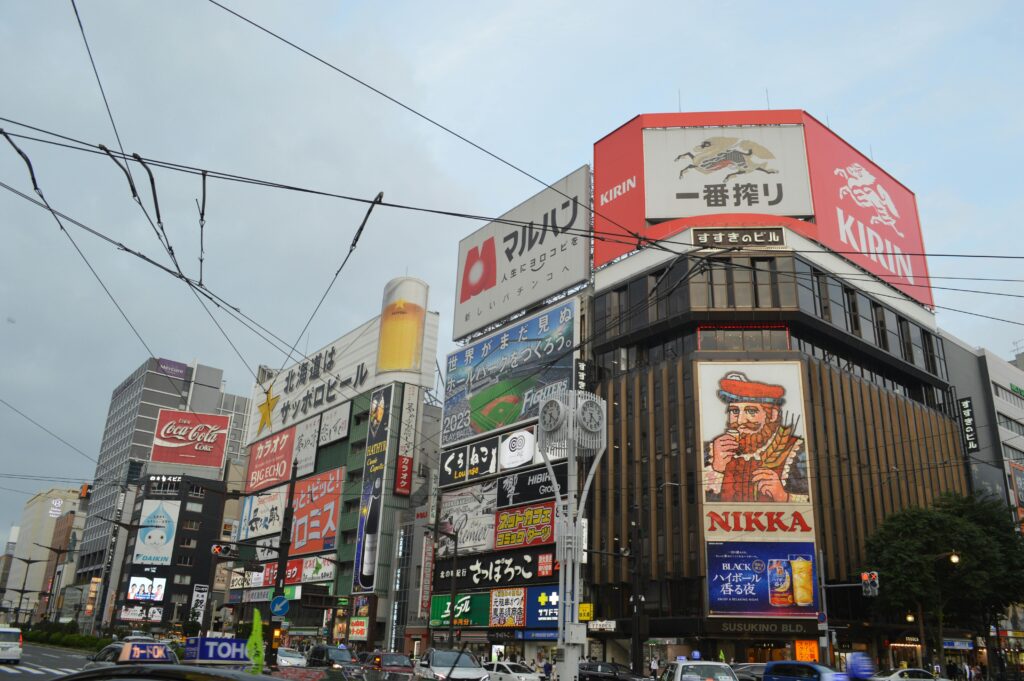
Best renowned for its several ski resorts and its annual Sapporo Snow Festival, which takes place at the start of February, Sapporo is Japan’s best winter destination. Ice sculptors from across the nation come to the festival to create enormous ice castles and monuments that are lit up with brilliant lights at night.
Sapporo, the site of the 1972 Winter Olympics, provides skiers with ideal powder snow conditions. More than 1,000 kilometers of pistes, and a plethora of night-skiing options.
Take some time to visit the Ishiya Chocolate Factory and sample their specialty, white chocolate, while you’re in the area. After that, stroll around the Historical Village of Hokkaido, an outdoor museum with sixty historically inspired buildings that fully furnished and depict local pioneer life.
Ascend to the observation deck of the Sapporo TV Tower, which fashioned after the Eiffel Tower, for some of the best views over the city.
Moiwayama mountain is another fantastic sight, located just outside of Sapporo. For a clear perspective of the city and the surrounding natural areas, ride the cable car to the summit.
7. Fukuoka
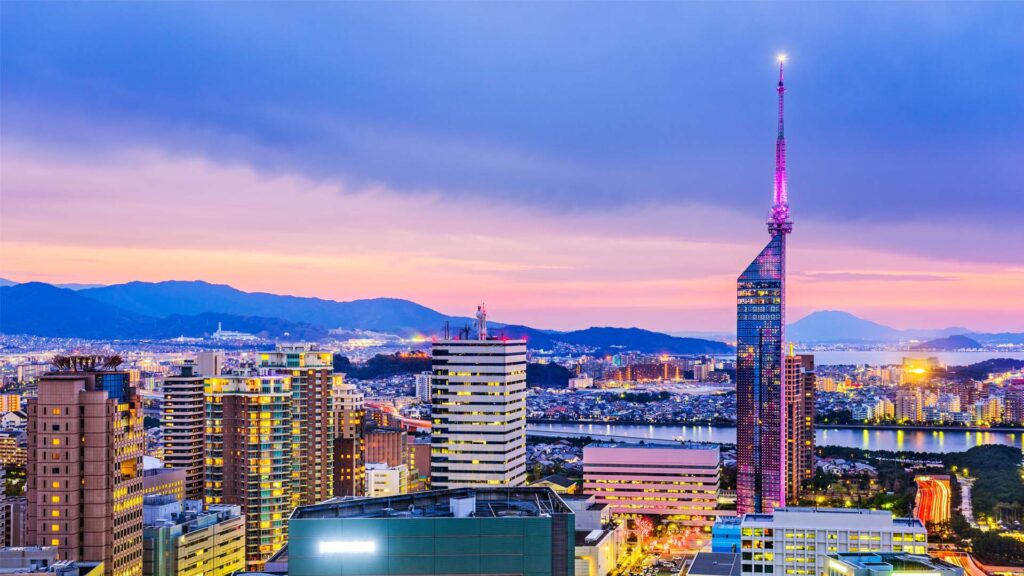
One of the most will-known events in Fukuoka is the Mitama Festival. At Gokomu Shrine,more than 6,000 lanterns lit in observance of the holiday. While Taiko drumming played to beckon the souls of the deceased. Although this well-known holiday observed througout Japan. Fukuoka draws visitors from all over the nation because it honors Japan’s war dead throughout its celebrations.
Make sure to see Japan’s largest shopping center whilst in Fukuoka. More than 250 shops, a movie theater, movie theaters, gaming centers. Even its own canal that runs through the middle of the complex are all found at Canal City Hakata.
There are several of eateries with views of the sea at Momochi Seaside, a park and artificial beach. That is close to the Fukuoka City Museum, if you would prefer to spend your time outside.
Another must-see location is Tochoji Temple, which is home to the largest sitting Buddha statue in Japan.
The mountains that around Fukuoka are ideal for trekking, such as Mt. Shiouji, which has the ruins of Ohno Castle, and Mt. Hiko, which has copper torii gates at the summit. Take a cable car up Mt. Sarakura at night for a breathtaking view over the lights of the city below.
8. Kanazawa,Japan:
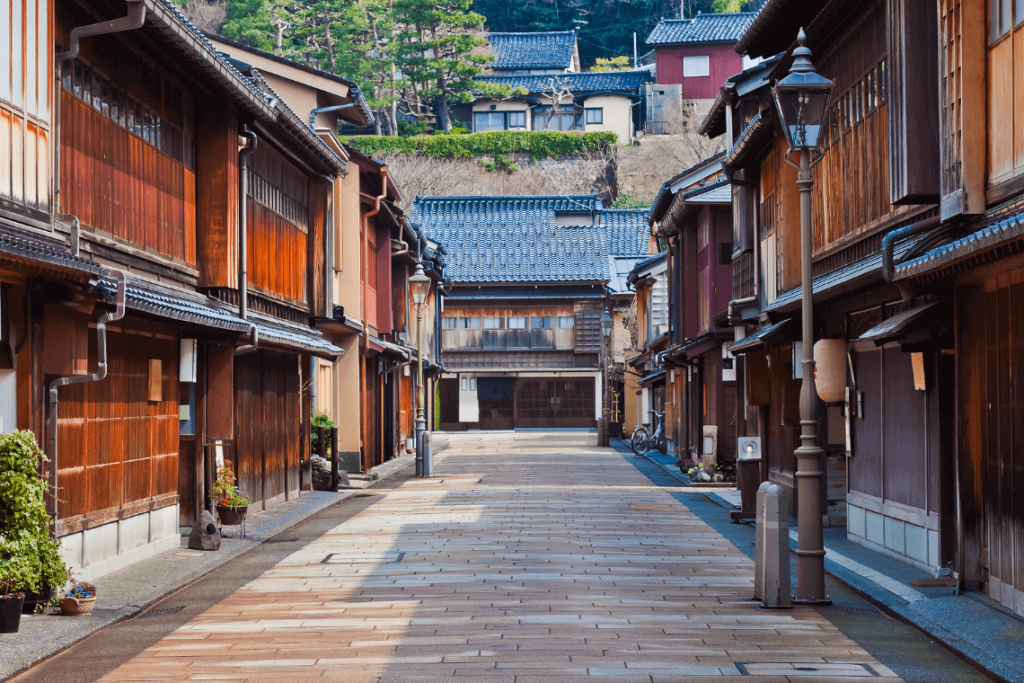
All of Kanazawa’s historic architecture, notably the 16th-century Kanazawa Castle and the lovely gardens that surround. It has survived since the city was spared from bombing during World War II. The Nagamachi Samurai neighborhood, located at the base of the castle. It offers visitors a look into the way of life that samurai and their families led in the past.
Across town, the Higashi Geisha District still maintains the chayas, or teahouses, where centuries ago geishas entertained the affluent. Here, guests can visit the Gold Leaf Sakuda shop to purchase a memento adorned with gold leaf, a customary art from the area. And the Ochaya Shima Museum to learn about the lifestyle of the geisha.
In addition, you can enjoy a cup of green tea at one of the area’s operational teahouses while sampling traditional wagashi delicacies.
9. Kobe:
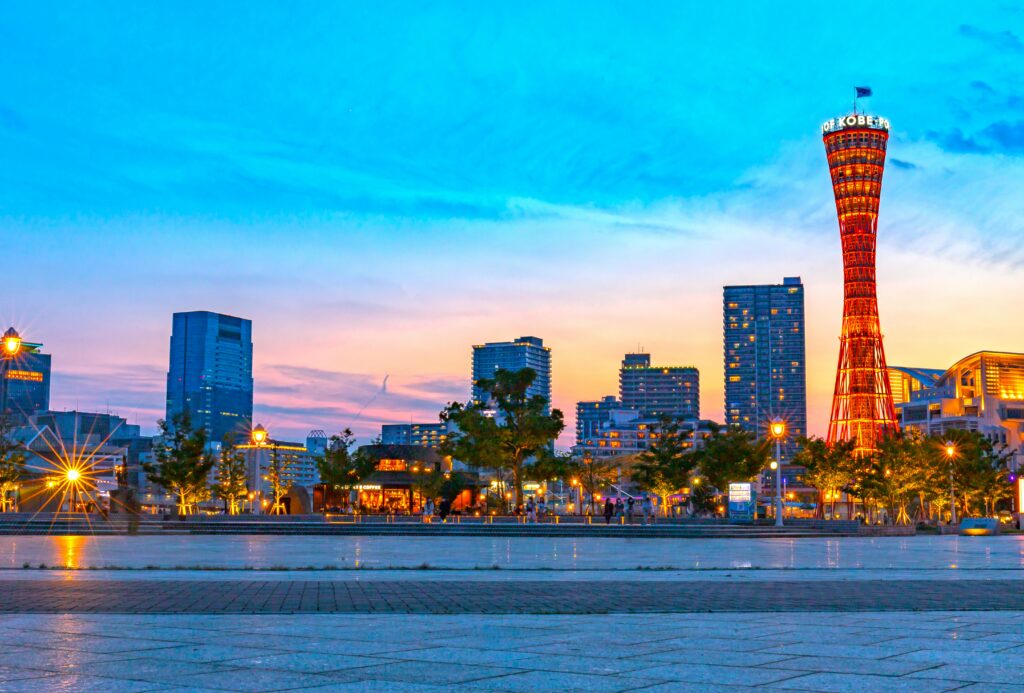
The greatest thing about Kobe, despite its greater fame as a port city, is its idyllic setting between the sea and the Rokko mountains. Steps away is Mount Rokko, an easy day climb, and during the hotter months, Nunobiki Falls is a lovely place to visit.
Visit the all-marble Jain Temple for a peaceful diversion, and when the sun sets, ascend the Kobe Port Tower for a 360-degree panorama over the city’s lights. The Maritime Museum, which emphasizes the significance of the sea in the creation and development of the city, and the Kobe Fashion Museum, the first of its kind in Japan, are also located in Kobe.
10. Nagasaki, Japan:
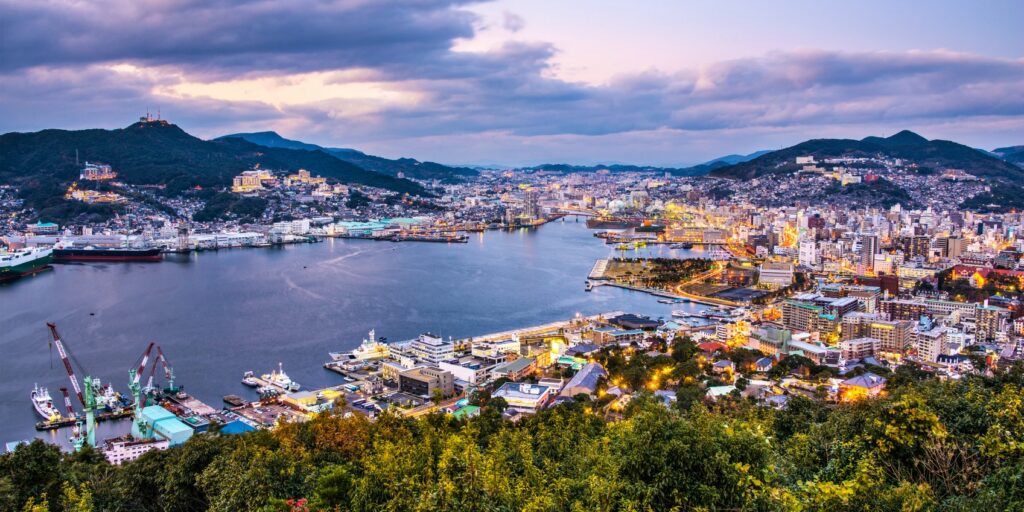
During World War II, a nuclear attack also damaged Nagasaki, which gradually rebuilt over the ensuing decades. A stroll around Peace Park, with its plethora of monuments and memorials, and the Nagasaki Atomic Bomb Museum are two places where you can view some of that history.
Compared to other Japanese towns, Nagasaki has a more global flare due to its history as a port city. This is evident in the numerous crowded diners and small cafes serving a wide variety of foods, from okoze fish meals to champon noodles with influences from Fujian.
Travelers can ride the Ropeway cable car up Mount Inasa to see Nagasaki’s renowned “10 million dollar view.” After ascending, make your way to the observatory platform for a 360-degree view of the city and Nagasaki Port, which is even more breathtaking at night.
Hashima (Battleship) Island, an abandoned island that was formerly the entrance to an underwater coal mine and a camp for forced labor, is located just off the coast of Nagasaki Bay. Tours of the island currently available, and shots of its deteriorating buildings utilized in the James Bond movie Skyfall.
11. Takayama, Japan:
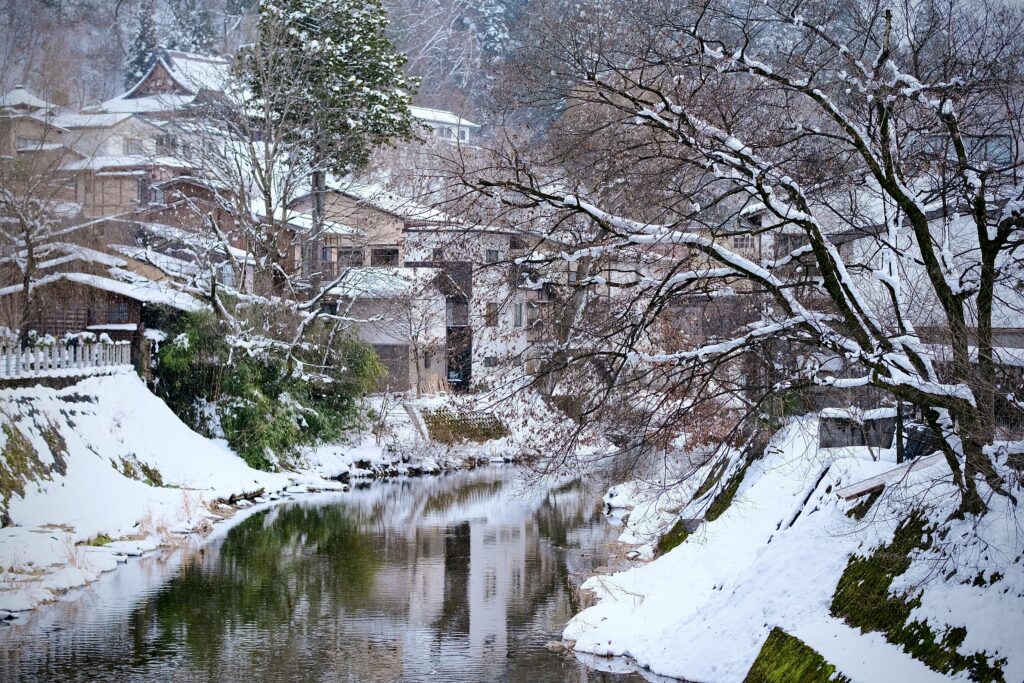
Takayama, a sizable city with a charming small-town atmosphere, is located in the Japanese Alps and experiences a lot of snowfall there throughout the winter. When the powdery soft snow is covering the old buildings housing the Sakurayama Hachimangu Shrine and the Kusakabe Folk Crafts Museum, they appear especially beautiful.
When spending the night in Takayama, guests can (and should) stay in ryokans, which are little inns that provide traditional lodging, tea ceremonies, and regional cuisine.
Three historical landmarks can found in Takayama: the streets that comprise the Sanmachi Suji District, where traditional homes coexist with cafés and stores in an area straight out of a history book, and Hida no Sato, an outdoor museum including over thirty historical thatch-roof farmhouses. You’ll have to take a quick day excursion out of town to see the third place, which is the village of Shirakawa-go, a UNESCO World Heritage Site with traditional homes that date back more than 250 years.
12. Matsue,Japan:
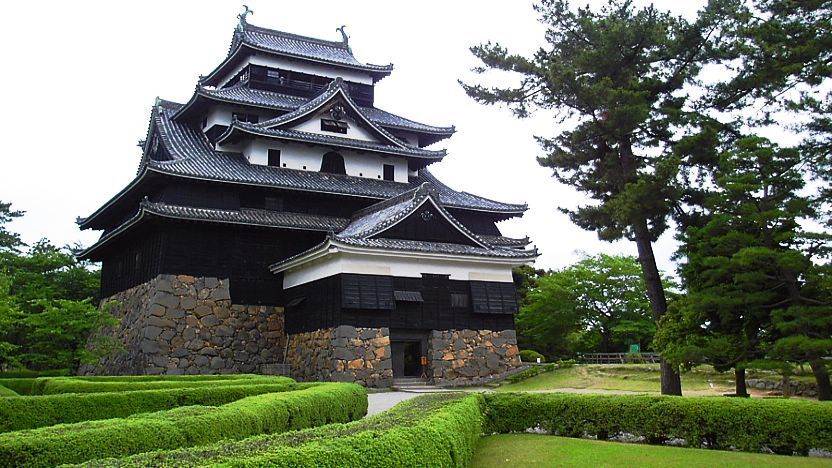
Situated on the Sea of Japan coast between Lake Shinji and Lake Nakaumi, the city of Matsue is well-known for housing one of the nation’s few remaining medieval castles. Matsue Castle is a wonder of original wooden architecture, erected in the early 1700s. Take a boat ride on Japan’s seventh-largest lake, Lake Shinji, during cherry blossom season to witness the breathtaking pink display around the castle.
Known as “samurai city,” the neighborhood around the house is home to numerous shrines, historic residences, and even a small fishing community. Additionally, there museums devoted to historical periods, musical instruments, and stories from ancient Japan.
Part of the fun also includes traveling to the city. One of the few remaining overnight sleeper trains in Japan is the Sunrise Izumo train. It takes you directly from Tokyo to the destination, and the experience is worthwhile.
From a port close to Matsue, you can take a ferry to the beautiful Oki Islands. The islands provide fantastic climbing on volcanic slopes, a chance to come across grazing horses and cattle, and immaculate beaches for swimming, kayaking, and just lounging away from the mainland, in addition to excellent birdwatching.
Visit our website, Travel India Info for more information on planning your next trips or mail us at info@travelindiainfo.com. We are happy to assist you. Happy Travelling!!!
Recent Posts
Europe Travel Guide: Best Places to Visit & Explore
15 Best Amazing Places to Explore in Scotland
9 Best Amazing Day Trip To Explore from Kyoto
